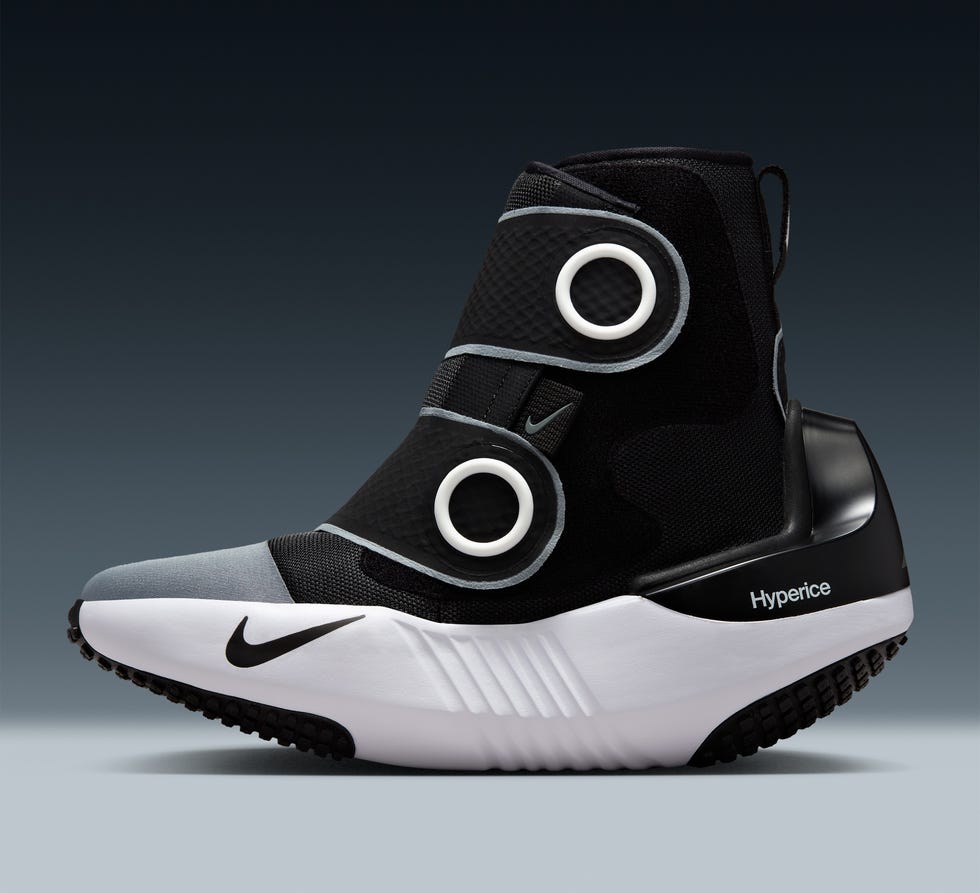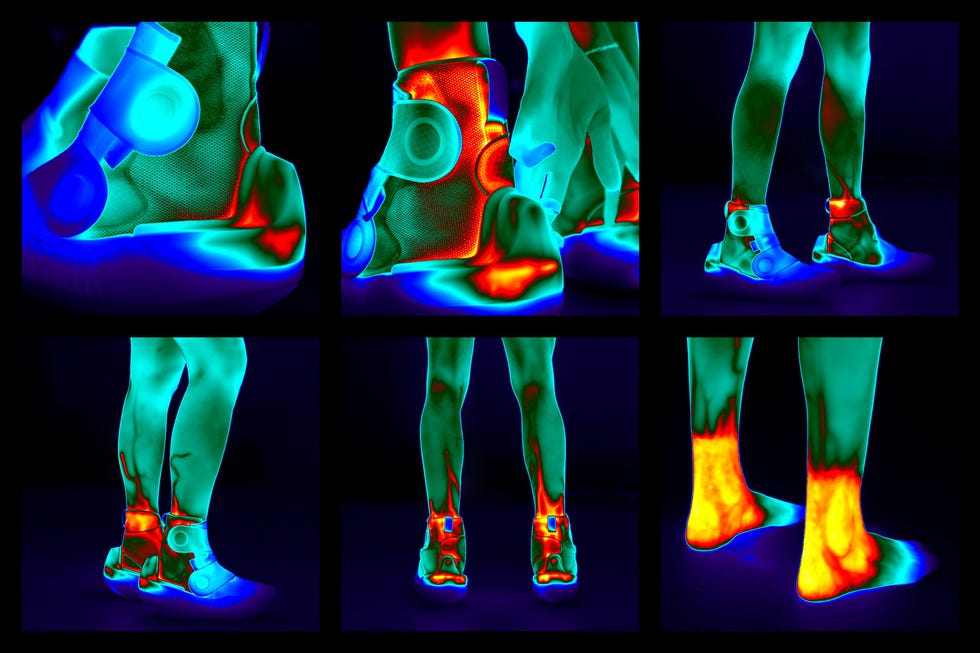Do You Need the Hyperice x Nike Recovery Shoe?

The best collaborations are always the ones you never see coming. The latest team up on our hit list is from Hyperice and Nike. Here at Esquire, we love gadgets—especially recovery devices—and we love sneakers. Naturally, when I heard through the grapevine (aka the abyss of my inbox) of a soon-to-launch Hyperice x Nike collaboration, I knew that I had to get my hands on a pair to test.
As a marathon runner who still plays recreational sports, I couldn't wait to figure out what this boot was all about. Hyperice has made recovery technology for the world's top athletes for a while now, but recently it's carved out space in the consumer market, so now your next door neighbor uses its products. You've probably seen a Hypervolt massage gun at Equinoxor its Normatec compression legs in your college locker room. And Nike, well, you know Nike. So, what could these possibly make together? Here's the full breakdown.
What Is the Hyperboot?The Hyperboot is a recovery shoe designed to enhance warm up and recovery to help athletes achieve peak performance in practice and competition. That's the official definition. Essentially, it's the Normatec compression and heat technology on a Nike sole, a compression bootie of sorts.
Unless you're isolating your upper body in the gym, the power you generate starts in your ankles. It's a complex part of the body, but vital to running, jumping, and lifting. Loosening your ankle up before a workout is imperative. Doing mobility work after a workout is just as imperative. The Hyperboot helps in both pre- and post-work instances with dual-air Normatec bladders bonded to warming elements. Evenly distributed heat drives deep into your complex little ankle—where bones, joints, ligaments, and tendons all interact—to get them loose. Then, dynamic compression brings blood flow to the foot. Heat plus compression is the standard for top-level athletes. Depending on the sport, physical trainers would hit different areas, but considering most amateurs are runners, this Hyperboot is exactly the product for that market.

Aside from being the first of its kind on the consumer market (and the brainchild of two revolutionary brands), the Hyperboot has some advanced features. You can choose from three levels of both heat and compression, controllable by either the buttons on the shoe or the Bluetooth connection to the Hyperice App.
Packed with its tech capabilities, you can take this shoe anywhere with you. It's even TSA-approved for carry-on so you can fly with it. You can even wear it on the plane because it's battery-operated, so you don't need to be charging it while you use it, and it'll do the same thing those compression socks do. Oh, and the battery is rechargeable so don't worry about that. The shoes are also IP54 rated—meaning they are protected from dust and splashes—so if they get a little spilt orange juice on them during your flight, it's all good.
Of course, the main selling point of the Hyperboot is that you can walk in it, as opposed to sitting immobile in the regular Normatec. Instead of breaking out the floss bands, you can add the Hyperboot to your regular dynamic warmup and stretching to kill two birds with one stone.

One, the hefty price tag, which is $899. Yes, it's a lot. (Though it's aligned with the cost of Hyperice's Normatec compression legs.) The use here—besides looking like a swagged-out marathoner from 2125—is for serious runners, lifters, and anyone whose had ankle issues.
Another thing to be aware of is that the shoes make a bit of a weird noise when in use. It's a bit of a muted whistle-buzz combination, and it's not crazy loud, but it was loud enough that I had to turn up the volume on my Shark Tank episode to drown it out.
The last piece I would consider is the sizing. It comes in five different sizes (S to XXL), and the range within each interval is two shoe sizes. Meaning that if you are on the cusp between sizes, you're in a bit of a tricky spot. It's recommended to size up. Because of the compression, you'll want them to bit a smidge roomy at the start. Also, if you're someone who likes to share recovery devices with your partner (or roommates, friends, etc), you have to be in the same shoe bracket.
Is it worth it?Now that's the million dollar—or $900—question. It really depends. Be honest with yourself. Yes, you can walk around in the shoe, but it's not made for walking. I wouldn't wear these things up and down the New York City streets. I would use them while cleaning my apartment, doing my laundry, working from home, etc. These are a performance tool—recovery device first, freaky looking shoe second. They are a lot more convenient than my Normatec compression legs, but obviously only targeted at what's at the ankle and below it.
The factor that I think that ultimately should be making your decision is your intended usage. Are you on your feet all day? Do you have any sort of chronic ankle soreness? Have you ever had an ankle injury (ligament issues require lifelong care)? Are running long distances or lifting heavy weights? Are you actually going to use these shoes? If they answer to any of those questions is yes, as Nike would say, just do it.
esquire





